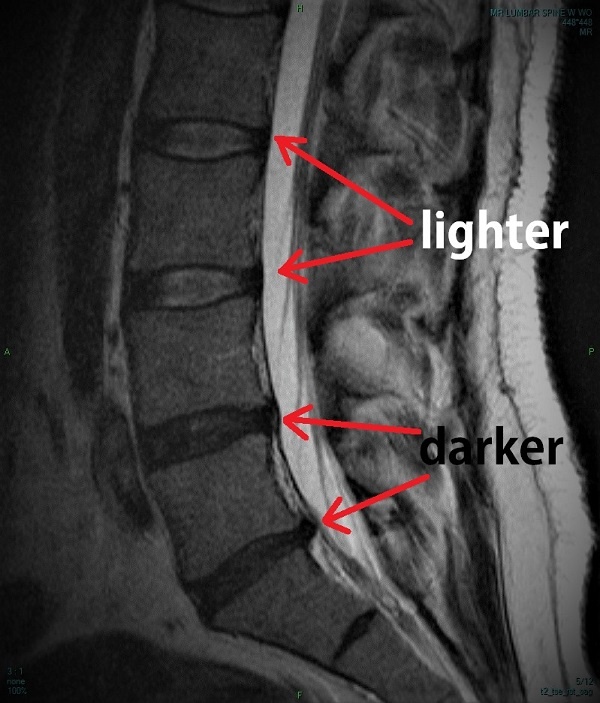Chances are at some point you’ve heard the term Degenerative Disc Disease (DDD). It may have been from a friend, studies of your own, or because your doctor took an x-ray and said you have this condition. Let’s take a minute to discuss what it really is and what it means to your everyday life.
WHAT IT IS
Spines are made up of a lot of cool parts, mainly 3 things – the bones, the discs, and the spinal cord. As we age, our bodies go through a lot of wear and tear that causes degeneration of the bones and discs. This can be accelerated by some big injury, but usually it is just because of gravity and our lifestyle nowadays of sitting a lot. In fact, it is so common that when I don’t see degenerative changes on someone’s x-ray I am surprised.
DDD generally means that your “intervertebral” discs are aging. Spinal discs are mostly water with a thicker fibrous outer layer. They resist gravity’s compression on our spine, and over time can lose hydration (appearing darker on MRI) and start losing their shape. Aging discs can flatten or they can bulge and herniate out into the area of the spinal cord. This causes pressure on the nerves in the cord or the spinal nerves exiting through tunnels in the back of the spine. Patients can have symptoms like pain, numbness/tingling, sciatica, or nerve irritation like weakness and bowel/bladder problems.

WHAT IT ISN’T
X-ray and MRI findings can be misleading. There may be a degenerative disc or a disc bulge, but it doesn’t mean the patient is having pain. I have seen some gnarly things on MRIs and yet the patient didn’t have any pains at all that were connected with it.
The problem is, when an unhealthy disc persists and gets worse it becomes more likely that pain or other issues will soon appear. The physical examination will help us understand more about a patient’s pain than anything else. An exam is how we decide what is most likely causing your symptoms and what course of treatment is recommended.
So what does it mean if you have this degeneration in your discs? It means your discs are not as big or as healthy as they used to be, and it could be related to your pains. It does not mean your spine is too far gone, or that you have no options for getting better.
A GREAT SOLUTION (CLIFFHANGER…)
If you are experiencing neck or back problems – especially if it is radiating into your arms or legs – don’t hesitate to visit a chiropractor for a thorough exam and treatment. At Favero Chiropractic we offer a fantastic therapy for patients with degenerative disc disease. Return next week to learn about Spinal Disc Decompression, a great solution to DDD, and how it can help your discs.
